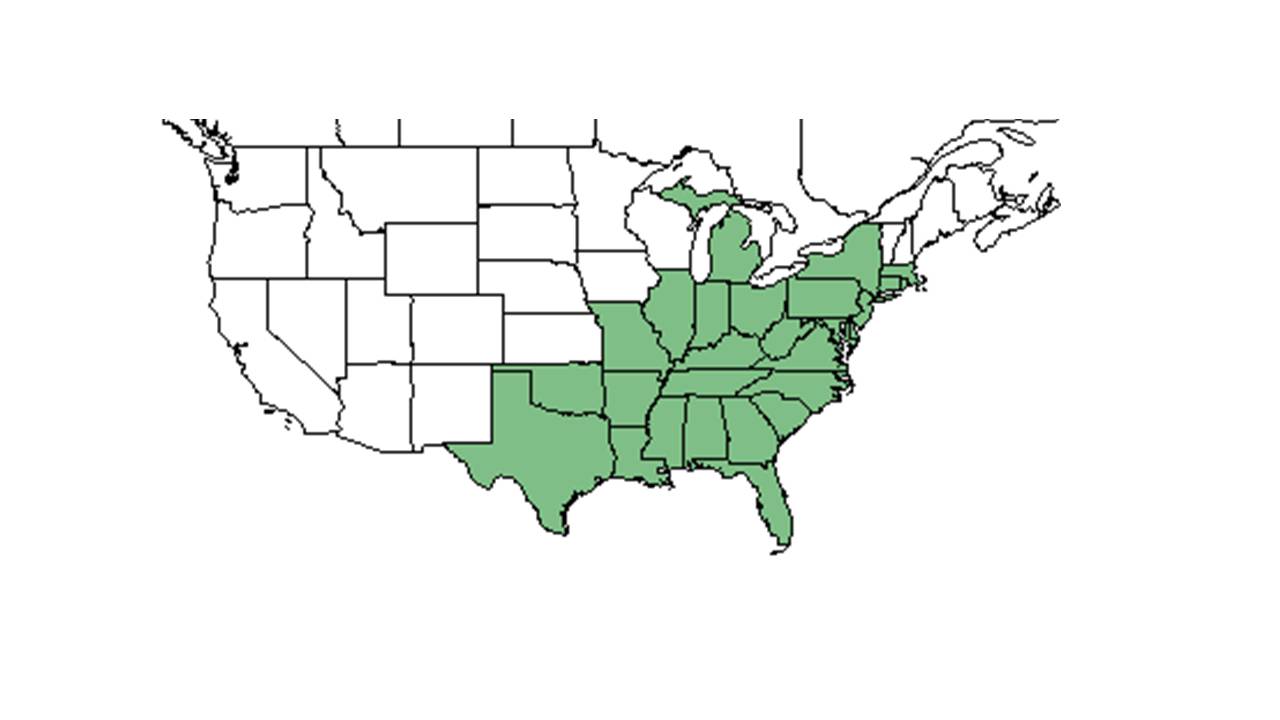Difference between revisions of "Panicum verrucosum"
(Created page with "{{italic title}} <!-- Get the taxonomy information from the NRCS Plants database --> {{taxobox | name = Panicum verrucosum | image = Insert.jpg | image_caption = | regnum = P...") |
|||
| Line 22: | Line 22: | ||
==Ecology== | ==Ecology== | ||
===Habitat=== <!--Natural communities, human disturbed habitats, topography, hydrology, soils, light, fire regime requirements for removal of competition, etc.--> | ===Habitat=== <!--Natural communities, human disturbed habitats, topography, hydrology, soils, light, fire regime requirements for removal of competition, etc.--> | ||
| + | P. verrucosum is found in cut-burned areas of a chamaecyparis thyoides stand in the Great Dismal Swamp (McKinley et al. 1979). | ||
===Phenology=== <!--Timing off flowering, fruiting, seed dispersal, and environmental triggers. Cite PanFlora website if appropriate: http://www.gilnelson.com/PanFlora/ --> | ===Phenology=== <!--Timing off flowering, fruiting, seed dispersal, and environmental triggers. Cite PanFlora website if appropriate: http://www.gilnelson.com/PanFlora/ --> | ||
| + | Annual grass (Kirkman and Sharitz 1994). | ||
===Seed dispersal=== | ===Seed dispersal=== | ||
===Seed bank and germination=== | ===Seed bank and germination=== | ||
| + | – Significant increase in abundance after tilling(soil disturbance) and abundant in the seed banks (Kirkman and Sharitz 1994). | ||
===Fire ecology=== <!--Fire tolerance, fire dependence, adaptive fire responses--> | ===Fire ecology=== <!--Fire tolerance, fire dependence, adaptive fire responses--> | ||
===Pollination=== | ===Pollination=== | ||
| Line 31: | Line 34: | ||
==Conservation and Management== | ==Conservation and Management== | ||
==Cultivation and restoration== | ==Cultivation and restoration== | ||
| + | ==Photo Gallery== | ||
==References and notes== | ==References and notes== | ||
| − | + | McKinley, C. E. and F. P. Day (1979). "Herbaceous production in cut-burned, uncut-burned and control areas of chamaecyparis thyoides (L.) BSP (Cupressaceae) stand in the Great Dismal Swamp." Bulletin of the Torrey Botanical Club 106: 20-28. | |
| + | |||
| + | Kirkman, L. K. and R. R. Sharitz (1994). "Vegetation disturbance and maintenance of diversity in intermittently flooded Carolina bays in South Carolina." Ecological Applications 4: 177-188. | ||
Revision as of 19:21, 11 June 2015
| Panicum verrucosum | |
|---|---|

| |
| Scientific classification | |
| Kingdom: | Plantae |
| Division: | Magnoliophyta - Flowering plants |
| Class: | Liliopsida – Monocotyledons |
| Order: | Cyperales |
| Family: | Poaceae ⁄ Gramineae |
| Genus: | Panicum |
| Species: | P. verrucosum |
| Binomial name | |
| Panicum verrucosum Muhl. | |

| |
| Natural range of Panicum verrucosum from USDA NRCS Plants Database. | |
Contents
Description
Distribution
Ecology
Habitat
P. verrucosum is found in cut-burned areas of a chamaecyparis thyoides stand in the Great Dismal Swamp (McKinley et al. 1979).
Phenology
Annual grass (Kirkman and Sharitz 1994).
Seed dispersal
Seed bank and germination
– Significant increase in abundance after tilling(soil disturbance) and abundant in the seed banks (Kirkman and Sharitz 1994).
Fire ecology
Pollination
Use by animals
Diseases and parasites
Conservation and Management
Cultivation and restoration
Photo Gallery
References and notes
McKinley, C. E. and F. P. Day (1979). "Herbaceous production in cut-burned, uncut-burned and control areas of chamaecyparis thyoides (L.) BSP (Cupressaceae) stand in the Great Dismal Swamp." Bulletin of the Torrey Botanical Club 106: 20-28.
Kirkman, L. K. and R. R. Sharitz (1994). "Vegetation disturbance and maintenance of diversity in intermittently flooded Carolina bays in South Carolina." Ecological Applications 4: 177-188.